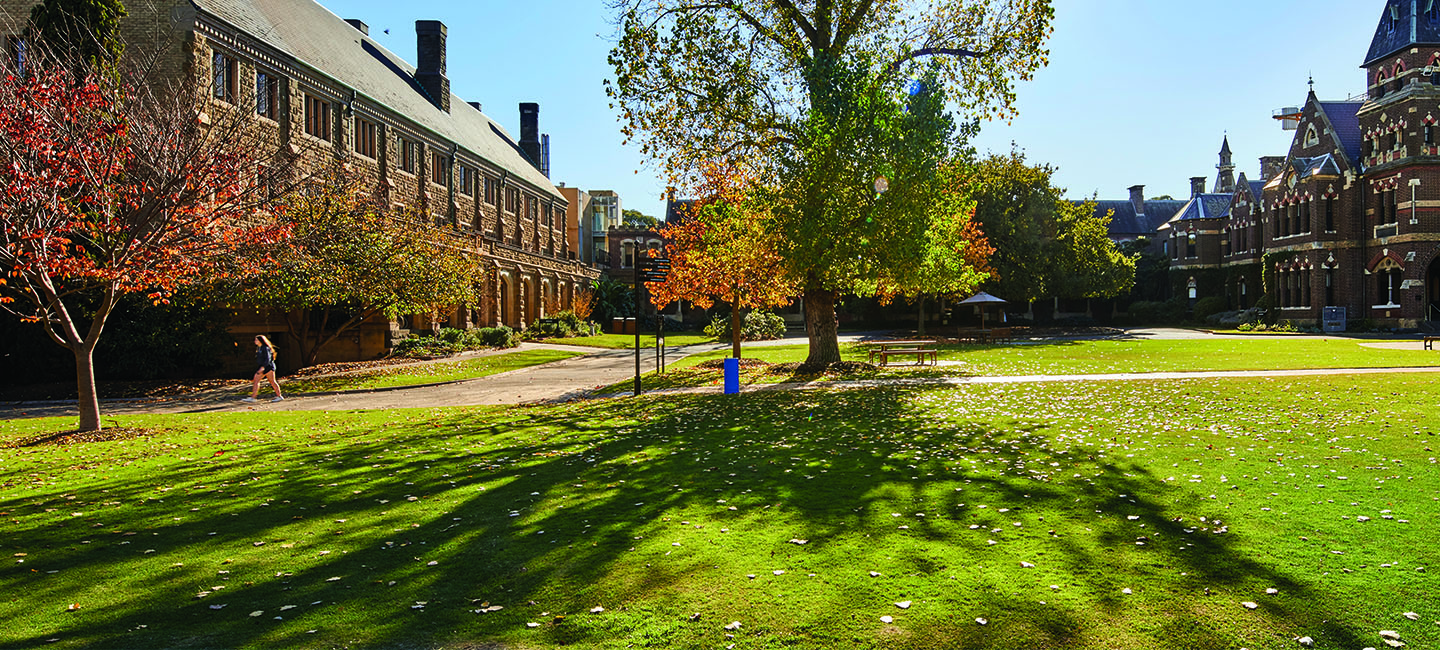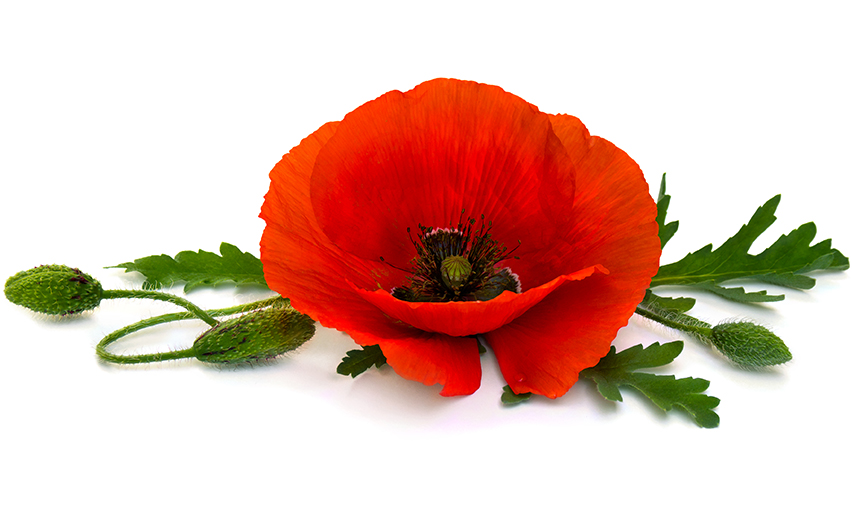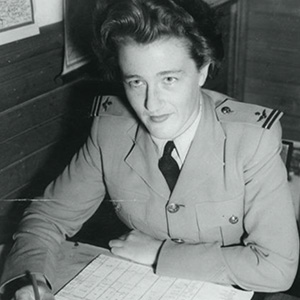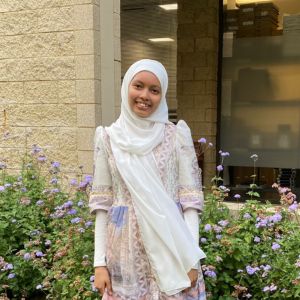

Lest we forget the Trinitarians who served in WWI
To commemorate the armistice of World War I, we remember the Trinitarians who served and fell.
 As the guns fell silent across the Western Front in France on 11 November 1918, communities across Australia were taking stock of the enormous toll on human life the past four years of conflict had wrought.
As the guns fell silent across the Western Front in France on 11 November 1918, communities across Australia were taking stock of the enormous toll on human life the past four years of conflict had wrought.
Nowhere was this more visible or keenly felt than in the close-knit communities of educational institutions where, only a few short years earlier, many of the young men and women had been students, alumni and staff.
‘There is no place of education in Australia with a finer record of war service than Trinity College, Melbourne; nor is there any institution which has felt more severely the strain of war-time conditions,’ wrote the Argus newspaper a week after the signing of the World War I armistice, referencing more than 280 serving college members and 42 fatalities.
When war had been declared, Trinity students and alumni alike had been quick to respond. This was much to the delight of the College Council, which could barely contain its happiness and pride due to the splendid response of past and present members of the college to the ‘Empire’s call to arms’.
However, one Trinitarian who had survived the horrors soberly reflected on his naivety in the October 1921 edition of the Fleur de Lys. ‘Many years ago, when I was a youth with a great imagination, I used to dream of the time when I would go to war to fight for my nation’s honour; of the time when I would distinguish myself; and of the glorious and victorious homecoming …,’ he wrote in a passage titled ‘Disillusionment’.
Champion athlete Herbert Hunter (TC 1903) who, before the war, had played for Essendon in the VFL, believed enlistment was an extension of his athleticism. ‘My action in volunteering my services to the Empire is, I consider, the culminating point of my athletic career’, he told the Bendigo Football League upon his departure.
Other alumni looked upon military service more directly as a duty towards the British Empire. Serving with 2nd Royal Irish Fusilliers, Osborne O’Hara (TC 1904) wrote to his parents from Quetta, India, where the regiment was stationed at the outbreak of the war, frustrated at the fact he was ‘not able to leave immediately for the front’. O’Hara would become the college’s first loss when, shortly after arriving in France, he was killed on 13 February 1915, just six months into the war.
On 27 April 1915, Warden Dr Alexander Leeper held a special chapel service to commemorate the ten collegians involved in the Gallipoli landings, which had taken place two days earlier. Among those was Lieutenant-Colonel Richard Courtney (TC 1888), who – as Leeper delivered his sermon – led the 14th Battalion AIF up the scrubby slopes to secure and hold a critical position above Anzac Cove. How many fellow Trinitarians who served on the Peninsula during the failed eight-month campaign, would recognise the strategic position along the ridge-line owed its name to one of their own – ‘Courtney’s Post’? These places, in their own way, have become lasting memorials.
While the college men would serve in combat roles, several alumni of the Trinity College Women’s Hostel played an active part in the war, often in roles no less dangerous. Helen Sexton (TC 1887), one of the first female graduates in medicine after overcoming the obstinance of the university, headed up a military hospital in France. She was recognised with the rank of major by the French Government and praised for ‘doing work of exceptional value’.
Viva St George Summons (née Sproule) (TC 1902) served as a nurse with the Red Cross in Egypt in 1915, while her medico husband and former college tutor Colonel Walter Summons, was based at No.1 Australian General Hospital at Heliopolis, Egypt. Fellow medical graduate Dr Vera Scantlebury (TC 1907) performed surgery at the Endell Street Military Hospital in London during some of the bloodiest fighting of 1917 across Bullecourt, Messines and Passchendaele. For her, the conflict had an intimately personal touch. Her sister Dorothy had become engaged to Robert Bage the month after war broke out. Bage (who had accompanied Mawson to the Antarctic in 1911) was killed at Gallipoli.
Encounters with fellow alumni at the Front brought a measure of familiarity to the shattered existence of the conflict. Military chaplain the Revd Kenneth Henderson (TC 1908), who published his wartime experiences as Khaki and Cassocks (1919), recounts a moment as dusk settled over the Somme battlefields. He had dined with two colleagues from college, and on their way back to camp had begun ‘reminiscing about the old Trinity days’ when they stumbled upon a small cemetery in Becourt Wood. As night fell, the staff-captain, known as a brilliant classic, began softly reciting Thucydides’ memorable account of Pericles’ speech over the Athenian dead. Words, as Henderson wrote, that were ‘strangely analogous to the struggle which was again beginning to break into the quiet of this evening.’
Trinity is proud to have a permanent memorial to our fallen. Produced in bronze by renowned military sculptor Ross Bastiaan (TC 1969), whose work can be seen across the Somme, Gallipoli, and elsewhere Australians have served, the memorial was supported by Bruce (TC 1959) and Judy Munro. Installed in the gardens of Bishops’, it is surrounded by the two residential wings that many of those who served would have called home and overlooks the Chapel where many of them are forever remembered.
By Dr Benjamin Thomas
This article first appeared in issue 87 of Trinity Today.
-
What's happening
-
News & Stories
- Anzac Day 2024 – Trinity stories
- Guest preacher Chris Mulherin on the intersection of science and religion
- Meet Foundation Studies student Hanadi Alabdouli
- Meet Foundation Studies student Miguel Valmayor
- Meet Gemma and Frederik Le Mesurier
- Meet visiting professor the Hon Justice Joe Williams
- Pioneering women and the story of Janet Clarke Hall
- Visit David Frazer's new exhibition: All that you've loved
- What is Eid al-Fitr?
- Events
- Art
- Music & Choir
- Campus Development Projects
- Visiting Scholars & Lectureships
- Accommodation for Visitors
- Work at Trinity
-
News & Stories



